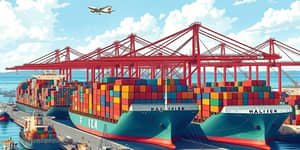
As global debt soars past $100 trillion, the world faces a crucible: can governments and corporations sustain borrowing costs in a high interest rate era?
In 2025, total global debt is projected to exceed record-breaking debt levels. Governments and corporations borrowed $25 trillion in 2024 alone—nearly triple pre-crisis volumes. Sovereign bond issuance in OECD countries is set to climb to $17 trillion, while the debt-to-GDP ratio across these nations averages 85%.
This ballooning debt reflects years of expansive fiscal stimulus, pandemic relief measures, and persistent budget deficits. In developed economies, central banks hiked rates to combat inflation, driving up the cost of new and refinanced borrowing. Meanwhile, corporations tapped debt markets for operational cash and financial engineering rather than long-term investment.
Bond yields have risen even amid rate cut discussions, pushing interest payments to unprecedented levels. OECD countries now devote 3.3% of GDP to servicing public debt—surpassing defense spending in many states. Nearly 45% of sovereign debt will mature by 2027, setting the stage for refinancing risks on the horizon as cheaper, legacy bonds roll off.
Emerging markets are particularly vulnerable. They face the highest real financing costs in over a decade, and must choose between costly new issuance and restrictive domestic policies. Corporate borrowers also struggle: commercial real estate cash flows are squeezed, and refinancing bottlenecks threaten credit market stability.
Higher servicing costs are crowding out essential investments in climate transition, infrastructure, healthcare, and digitalization. Fiscal flexibility shrinks as more budgetary room goes to interest payments, forcing tough trade-offs in public spending.
In many advanced economies, fiscal deficits remain stubbornly high. Without decisive policy measures, the spiral of debt and interest can derail recovery and slow long-term growth prospects.
Emerging economies confront a double bind: persistent funding needs and sharply rising borrowing costs. Many rely on dollar-denominated debt, burdened further by currency fluctuations. As global credit tightens, these nations risk capital flight, higher yields, and even default—undermining development spending on poverty reduction and infrastructure.
Local businesses, especially small and medium enterprises, struggle as credit conditions worsen. In the absence of robust financial buffers or alternative financing channels, economic growth stalls and financial stability erodes.
The challenges are formidable, but not insurmountable. Policymakers, investors, and business leaders can take steps to bolster resilience and foster sustainable growth even in a high interest rate environment.
Investors must reassess risk premia, diversify portfolios, and engage issuers on debt sustainability. Central banks need to navigate the fine line between controlling inflation and preserving financial stability. Governments should prioritize reforms that enhance productivity and broaden tax bases, reducing reliance on debt finance.
The year 2025 represents a pivotal moment for global borrowing capacity. As interest costs climb and refinancing demands surge, the world stands at a crossroads between fiscal fragility and renewed growth. By focusing on sustainable, high-impact investments and cooperative policy frameworks, stakeholders can transform a high interest environment from a threat into an opportunity for resilient and inclusive development.
Ultimately, the path ahead depends on collective will. Bold decisions today will shape whether rising rates become a chokehold on progress or a catalyst for a more robust and sustainable global economy.
References













